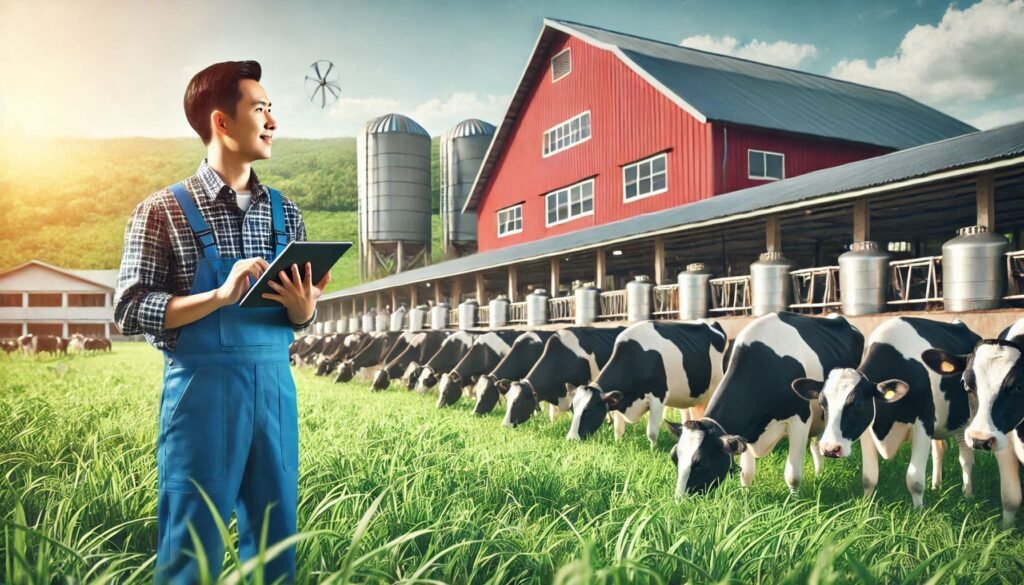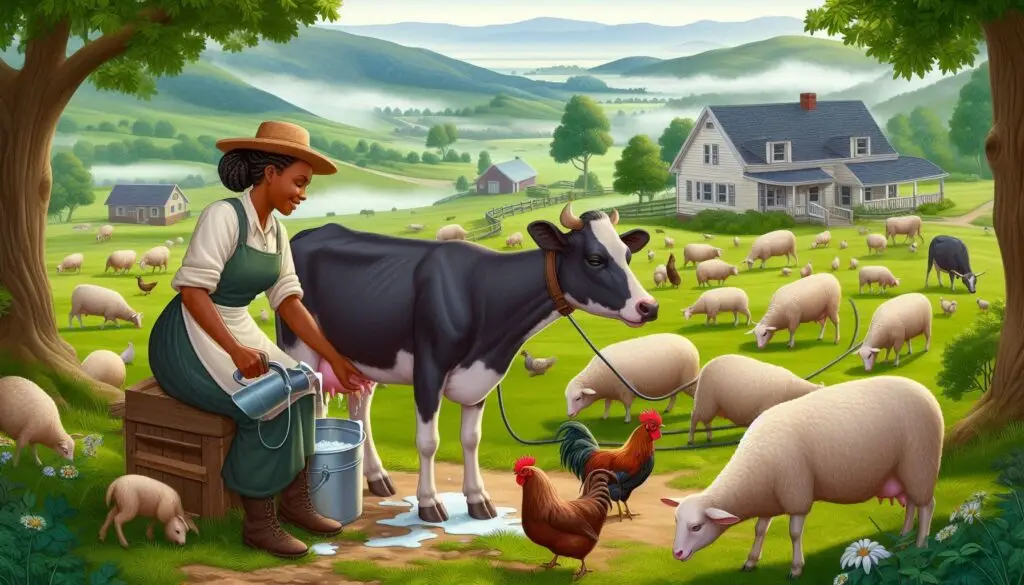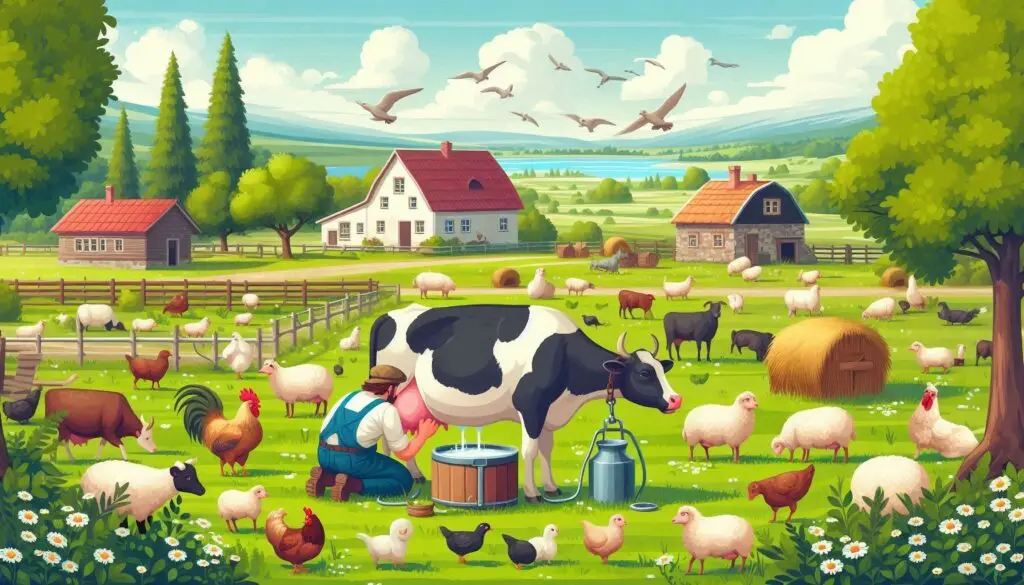Standardizing Farm Production Records

Introduction
In the world of dairy farming, accurate record-keeping is crucial. Standardizing farm production records allows farmers to make informed decisions about their herds. This article explores key methods for standardization, including Fat-Corrected Milk (FCM), age correction, lactation length adjustments, and milking frequency corrections. By understanding these concepts, farmers can optimize their operations and enhance productivity.
Understanding the Importance of Standardization
Standardization is essential for comparing the performance of dairy animals. Without a consistent framework, it becomes challenging to evaluate milk production accurately. Variations in fat content, age, and milking frequency can skew results. Therefore, implementing standardized methods helps ensure fairness and accuracy in assessments.
Why Standardize?
- Fair Comparisons: Standardization allows for apples-to-apples comparisons among different animals.
- Improved Management Decisions: Accurate data leads to better herd management strategies.
- Enhanced Productivity: Understanding performance metrics helps farmers identify areas for improvement.
Fat-Corrected Milk (FCM)
What is FCM?
Fat-Corrected Milk (FCM) is a metric that adjusts milk production based on its fat content. This adjustment is crucial because milk from different cows can have varying fat percentages. By standardizing FCM, farmers can compare the true productivity of their cows more fairly.
The FCM Formula
The standard formula for calculating FCM is:
FCM lbs or kgs =(0.4×pounds of fat)+pounds of milk
FCM lbs or kgs =(0.4×pounds of fat)+pounds of milk
This formula considers both the amount of milk produced and its fat content. For more information on FCM calculations, you can visit Dairy Herd Management.
Benefits of Using FCM
- Accurate Assessment: FCM provides a clearer picture of an animal’s productivity.
- Benchmarking Performance: Farmers can set benchmarks based on FCM to evaluate herd performance.
Correction of Age
Why Age Correction Matters
Age correction is vital when comparing production records across animals of different ages. Younger cows generally produce less milk than older ones. Therefore, without age correction, comparisons can be misleading.
How to Apply Age Correction
To standardize age correction:
- Use Consistent Adjustment Factors: These factors should be based on either Days in Milk (DIM) or lactation number.
- Example Factors:
- For a cow in her first lactation, you might apply a factor that reflects lower expected production.
- For cows in later lactations, higher factors may apply.
For detailed guidance on age correction methods, check out Penn State Extension.
Benefits of Age Correction
- Improved Comparisons: Age correction ensures that comparisons are fair and relevant.
- Better Insights into Production Trends: Understanding how age affects production helps in managing breeding programs.
Lactation Length Standardization
What is Lactation Length?
Lactation length refers to the duration over which a cow produces milk during a single lactation cycle. This metric significantly impacts total milk production.
Standardizing Lactation Length
To standardize lactation length:
- Use a Benchmark: A common benchmark is the standardized 305-day lactation period.
- Calculation Method:
- Standardized Milk Production=(Total Milk ProducedActual Lactation Length)×305
- Standardized Milk Production=(
- Actual Lactation Length
- Total Milk Produced
- )×305
This formula adjusts all records to reflect what would be produced over 305 days.
For more insights into lactation management, refer to Dairy Australia.
Benefits of Lactation Length Standardization
- Uniform Comparisons: All cows’ productions are evaluated on the same scale.
- Enhanced Productivity Analysis: Farmers can identify trends and make informed breeding decisions.
Correction for Frequency of Milking
The Impact of Milking Frequency
Milking frequency can greatly affect daily milk production figures. Cows that are milked more often tend to produce more milk. Therefore, it’s essential to correct for this variable when analyzing production records.
How to Correct for Milking Frequency
To standardize milking frequency:
- Determine the Standard Frequency: Typically, this is set at twice daily.
- Apply Correction Factors:
- If a cow is milked three times daily, you would adjust her production by multiplying by
- 23
- 3
- 2
- This ensures all records reflect what would be expected under a twice-daily milking schedule.
For additional resources on milking practices, check out The Dairy Site.
Benefits of Frequency Correction
- Accurate Daily Production Estimates: Adjusting for frequency ensures that daily figures reflect true productivity.
- Better Herd Management Decisions: Understanding how milking frequency impacts production helps optimize milking schedules.
Implementing Standardization Practices on Your Farm
Steps to Get Started
- Assess Current Practices: Evaluate how you currently track and analyze production records.
- Choose Standardization Methods: Decide which methods (FCM, age correction, etc.) are most relevant for your operation.
- Train Staff: Ensure that all staff understand the importance of these methods and how to apply them consistently.
- Monitor Results: Regularly review production data to assess the effectiveness of your standardization efforts.
Tools and Resources for Standardization
Utilizing technology can streamline the process of standardizing farm production records:
- Dairy Management Software: Programs like DairyComp 305 help track various metrics efficiently.
- Mobile Apps for Record Keeping: Apps like AgriWebb allow farmers to manage their records on-the-go.
Conclusion
Standardizing farm production records is essential for making informed decisions in dairy farming. By focusing on key areas such as Fat-Corrected Milk (FCM), age correction, lactation length adjustments, and milking frequency corrections, farmers can achieve more accurate assessments of their herds’ performance. Implementing these practices not only enhances productivity but also supports better management strategies overall.
More from Livestock Production and Management:
https://wiseias.com/opportunities-in-dairy-farming/





Responses